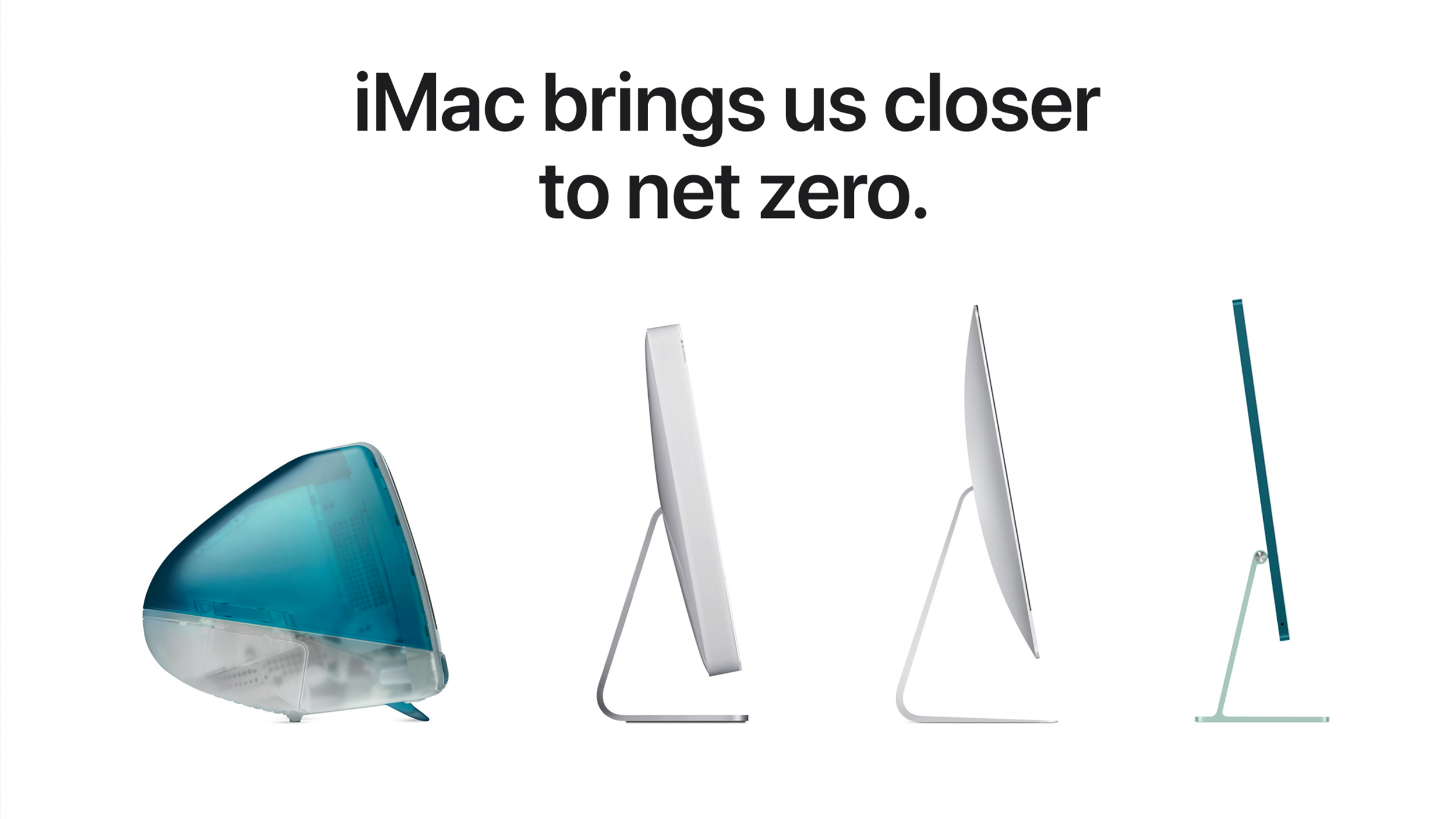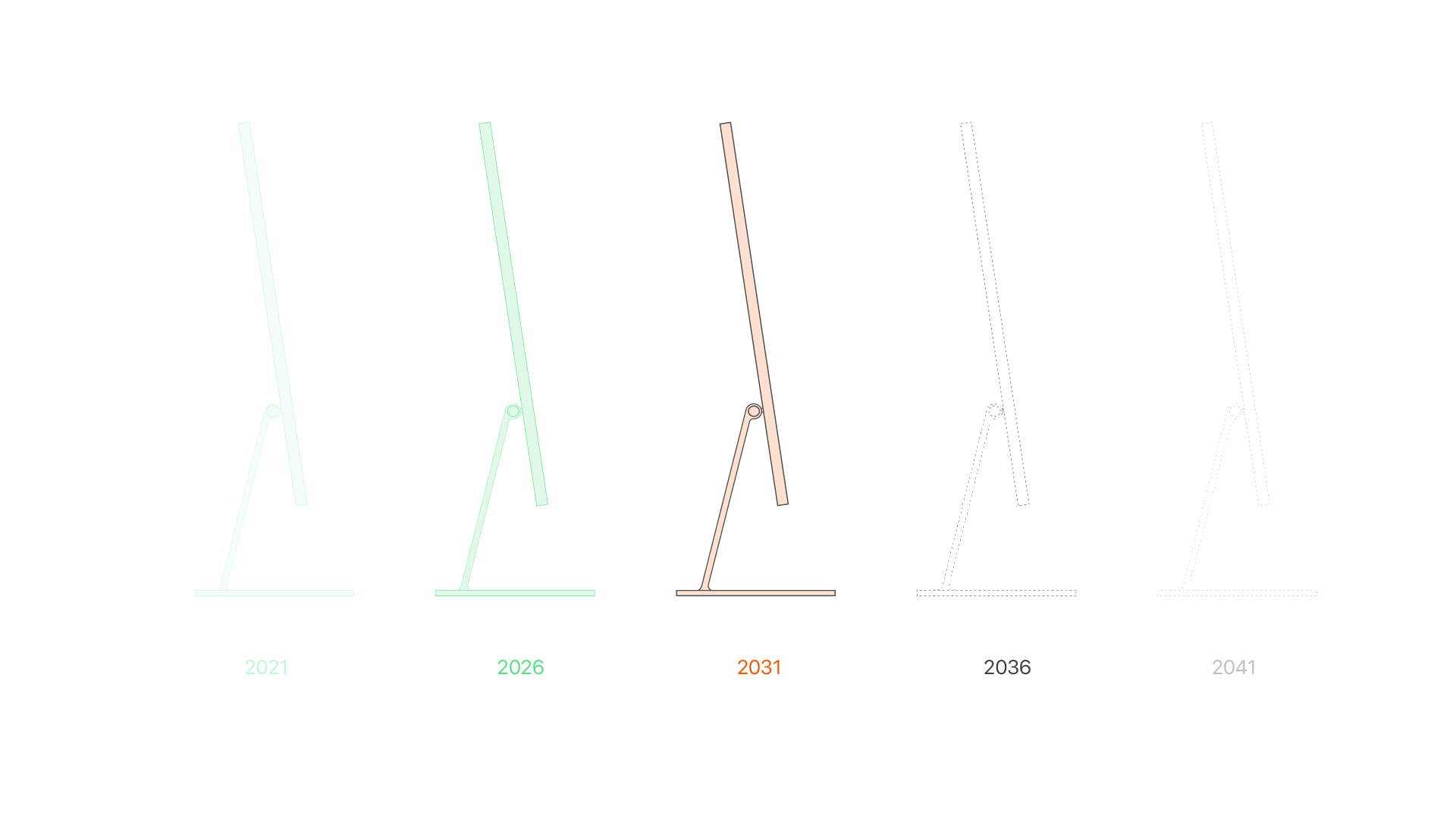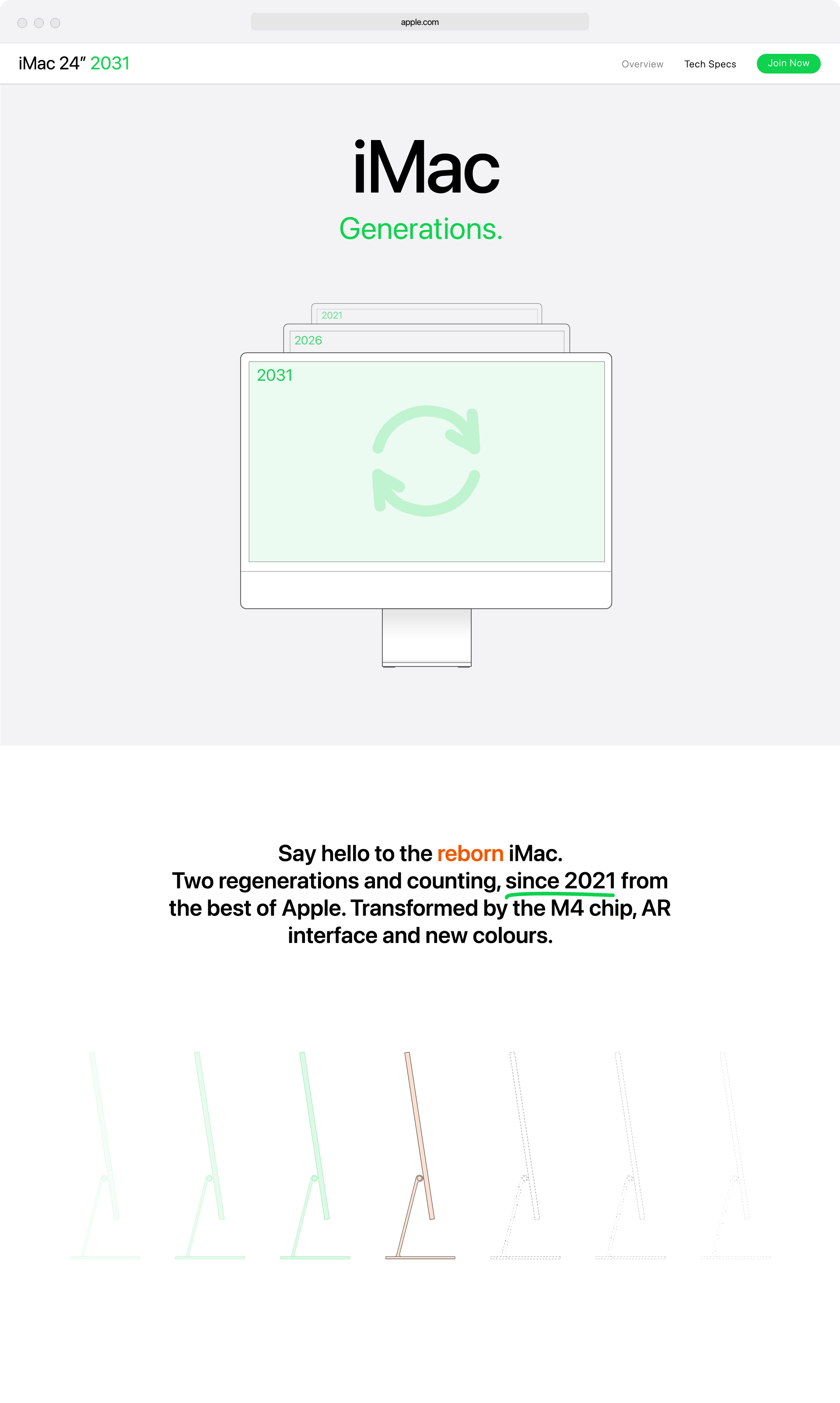
The last iMac you’ll ever need?
Why it’s time to think beyond the next generation of product to reduce our growing e-waste problem.
The consumer electronics industry has started to make long overdue changes to the way our technology products are designed, manufactured, shipped and recycled. But despite commitments to recycling and carbon neutrality, e-waste is still set to increase by 40% (according to the UN) by 2030.
We need to start thinking more radically about how we develop new products and their supply chains. To enable a more circular system that reduces e-waste, beyond the marginal gains from repair and more and better recycling.
Linear systems
The existing linear system our products are developed, sold and repaired (or not) on is helping to fuel demand and e-waste. Companies continue to make new generations of products, to take advantage of advancements in technology and performance but also to get people to buy more stuff. As designers and business leaders we create orphaned products - bringing them into the world with care but giving little thought for their end of life as we move onto birthing the next generation of product to replace them.
But is it even possible to create technology products in a truly closed loop system where we consider reuse, refurbishment and remanufacturing before recycling? The very nature of cutting-edge product development means core technologies and architectures are still evolving, meaning that the longer they last the less competitive they become. So should we simply focus on increasing the efficiency and scale of material recovery from our e-waste as Apple is doing?
Perhaps for emerging technology products, like folding screens, AR glasses and VR headsets which are yet to fully mature. But we are at a point with many of our technology products where their form factors have matured. For everything from laptops, computers, smartphones, smart watches, home hubs to TVs and speakers, their product archetypes have stabilised as the rate of change from one iteration to the next slows. So, there is now an opportunity to start planning for the design of our next generation of products - not as orphan new products but reborn and remanufactured from the previous generation.
Apple recently set out their goals to make every one of its products carbon neutral by 2030 and incorporate more recycled materials. This will fast become table stakes in the consumer electronics industry as all companies look to optimise and improve within their existing linear systems. But I'd like to think we can stop thinking about our products as a never-ending stream of new generations and to think about more trans-generational products - products that can be refurbished and remanufactured time and time again in a truly circular system
Trans-generational products
Take Apple's brand new 2021 iMac for example. Arguably as a product it has reached its definitive product archetype. The optimal form and size for the user and the context of use in the home or office. Rather than the design team now turning to the development of the next new generation of product, might they consider this as a contender for more circular product development to reduce e-waste and save energy even further. Let's imagine this 2021 iMac in 2026 when it has inevitably begun to reach the end of its competitive life. Apple could welcome back these products at scale, not for destructive disassembly for material recovery but for remanufacture. It could refinish and reuse major components like the aluminium stand, enclosure and glass of the screen rather than recycling them back to raw materials. It could update key performance components (processors, memory etc) to take advantage of technological advancements. It might even look at new manufacturing techniques to modify and improve existing components.
iMac Generations
Let's imagine this keeps happening. It's 2031 and the iMac has been remanufactured for a second time. Reborn again as the next version of "iMac Generations". Three generations in the making since 2021. Regenerated from the best of Apple’s old products and updated with new colours and upgraded with their latest technologies.
Of course, there are enormous challenges in doing this. Just improving recycling rates and efficiencies in our existing linear systems at the scale our products are created and destroyed is challenging. Apple's goals to increase recycling along with the rest of the industry is necessary. Of the 53.6 million tonnes of e-waste produced globally in 2019 only 17.4% was documented to be collected and properly recycled. Europe leads the world with a 42.5% recycling rate with Asia (11.7%) and the US (9.4%) lagging far behind. The rest is mostly dumped or burned.
But while we rightly focus on building the capability for recycling at scale, as designers and business leaders we need to think about what we can do beyond recycling. It's not simply about redesigning our products for repair and recycling. We need to think at a systemic level about the way we conceive our products, the supply chains needed and the manufacturing systems and production methods we use – as well as looking at new business models to support this transition to a truly circular economy.
If we use more imagination now to re-think how we have always done things we have a chance to not only reduce the amount of e-waste and associated emissions but perhaps unlock new value and opportunity for both business, users and the planet.




